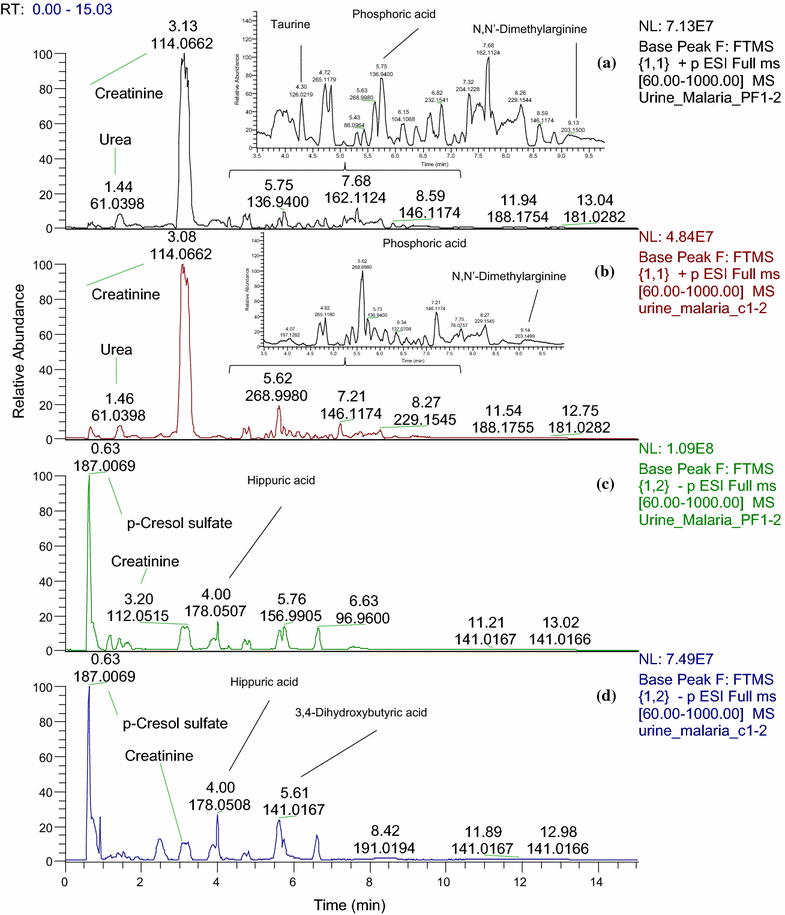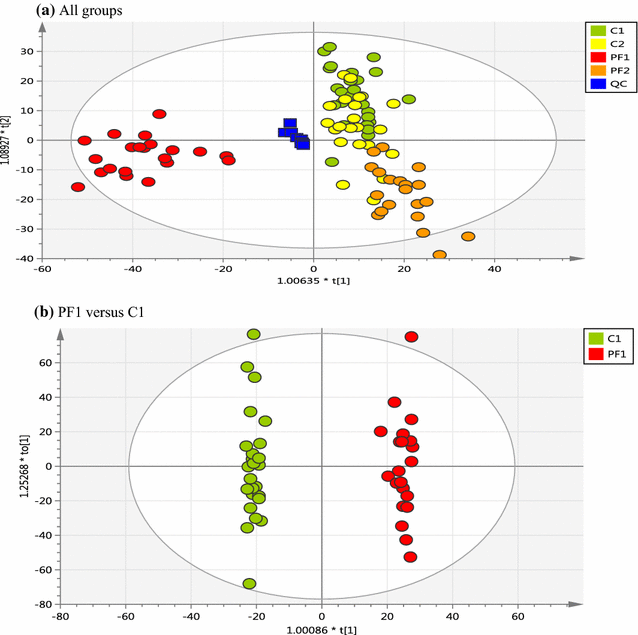A metabolomic analytical approach permits identification of urinary biomarkers for Plasmodium falciparum infection: a case-control study
- PMID: 28558710
- PMCID: PMC5450092
- DOI: 10.1186/s12936-017-1875-z
A metabolomic analytical approach permits identification of urinary biomarkers for Plasmodium falciparum infection: a case-control study
Abstract
Background: Currently available diagnostic techniques of Plasmodium falciparum infection are not optimal for non-invasive, population-based screening for malaria. It was hypothesized that a mass spectrometry-based metabolomics approach could identify urinary biomarkers of falciparum malaria.
Methods: The study used a case-control design, with cases consisting of 21 adults in central Ethiopia with a diagnosis of P. falciparum infection confirmed with microscopy, and 25 controls of adults with negative blood smears for malaria matched on age and sex. Urinary samples were collected from these individuals during presentation at the clinic, and a second sample was collected from both cases and controls 4 weeks later, after the cases had received anti-malarial medication. The urine samples were screened for small molecule urinary biomarkers, using mass spectrometry-based metabolomics analyses followed by multivariate analysis using principal component analysis and orthogonal partial least square-discriminant analysis. The chemical identity of statistically significant malaria biomarkers was confirmed using tandem mass spectrometry.
Results: The urinary metabolic profiles of cases with P. falciparum infection were distinct from healthy controls. After treatment with anti-malarial medication, the metabolomic profile of cases resembled that of healthy controls. Significantly altered levels of 29 urinary metabolites were found. Elevated levels of urinary pipecolic acid, taurine, N-acetylspermidine, N-acetylputrescine and 1,3-diacetylpropane were identified as potential biomarkers of falciparum malaria.
Conclusion: The urinary biomarkers of malaria identified have potential for the development of non-invasive and rapid diagnostic test of P. falciparum infection.
Keywords: Biomarker; Falciparum; Malaria; Metabolomics; Urine.
Figures


References
-
- WHO . World malaria report. Geneva: World Health Organization; 2013.
-
- Katzung B, Masters S, Trevor A. Basic and clinical pharmacology. 12. New York: McGraw-Hill Education; 2012.
Publication types
MeSH terms
Substances
LinkOut - more resources
Full Text Sources
Other Literature Sources

